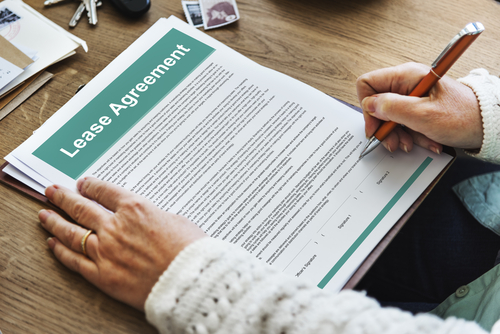Tips for Reading & Understanding Your Lease

All of us will come across a lease at some point. If you’re just starting out in the renting world, that lease might feel quite intimidating. Hopefully you’ve been told that you should never sign something before you’ve read and understood it. But how do you make heads or tails of all the legalese? How do you know which points are the most important?
Ideally, you’ll have time to meet with your landlord and discuss your questions. Don’t sign unless the document reflects everything you need it to. Often, landlords will use a template found online for the lease, so you want to make sure that things specific to your property are included in there. Retain a copy of the signed lease for your own records.
Here’s a crash-course to help you identify and discuss the most important part of your lease before you sign.
Contact Information and Signees
The first important element of a lease is identifying the parties involved. Make sure that you know who your landlord is, and how to contact him or her with concerns. On the other side of the agreement, consider the details of the tenants. If you’re going in with roommates, you need to talk about whether all of you will be on the lease or just one person. Usually, it’s best to have all names there so that there’s not one person who’s shouldering the responsibility of everyone else coming and going.
Make sure that you know who the contact is for emergencies in the property, like a burst pipe in the middle of the night. Additionally, you should make sure that the property that you’re signing for is actually the property that you’re going to live in; check the address.
Payment Information
Always make sure that your signed lease reflects the amount that you actually pay for rent; don’t go in for side deals where they mark a lower price for tax reasons, but have you pay something differently. Note how much is due each month, what the method of delivery will be, and when it’s due each month. Is there a late fee?
Another important thing to note is whether the rent amount is locked in. Some leases will make provisions for hikes in the rent. If it doesn’t specially have a provision, your rent price is fixed until the lease length is up.
Maintenance Responsibilities
One of the most important elements of a lease agreement is the section where you specify who has the responsibilities for the upkeep and maintenance of the property. Who takes care of the lawn, the snow removal, or a broken dishwasher? Identify a few key things:
- Who your contact person is for maintenance concerns, both emergency ones and smaller-priority items.
- Exactly what issues you’re responsible for and what the landlord is in charge of.
- What factors will you be charged for, and what can the manager withhold your security deposit for? The standard is that any repairs beyond “normal wear and tear” will be paid for by the tenants out of the security deposit.
Utilities
Just like maintenance, you’ll need to identify responsibility for utilities and monthly costs. The standard utilities include electricity, internet/phone bills, and gas. Much of the time, since those are up to the tenants’ discretion, those are covered by the tenant. However, there are other utility bills that can be a bit more confusing. This includes city utilities and HOA fees. Make sure you know whose names are going to be on each account and what you need to do if someone isn’t fulfilling their responsibilities.
Property Standards and Rules
There are some basic ground rules that must be established before you move in. Make sure that you know what the rules are for:
- Parking
- Maximum occupancy
- Guests and overnight stays
- Pets
- Insurance requirements
- Long vacancies
- Subletting
- Eviction process
- When the landlord is allowed to enter the property and what process must be followed
Review all questions with your landlord before signing, and if you come to an agreement different from what’s on the document, make sure that you make adjustments to the text before signing.
